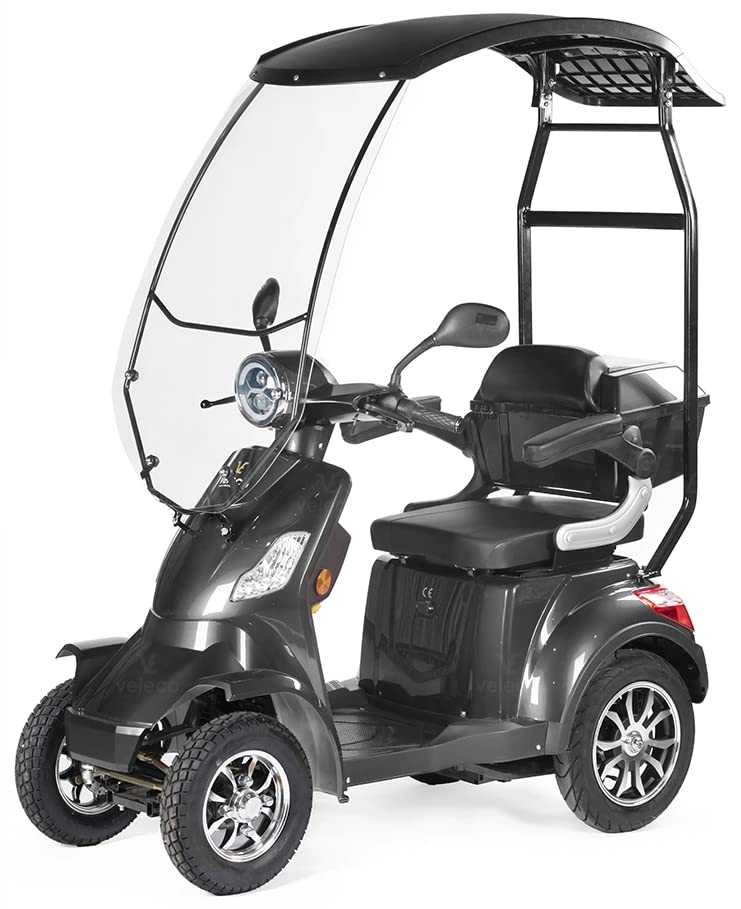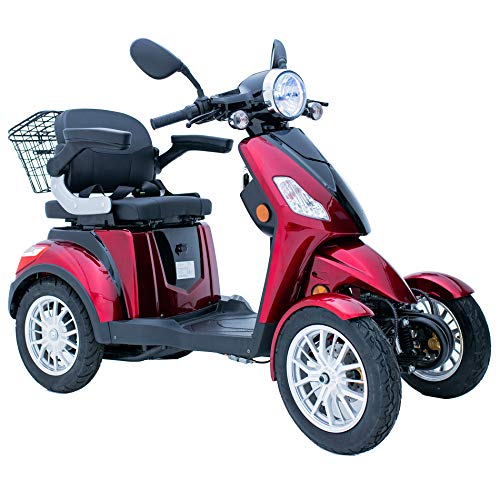How To Choose The Right Urban Mobility Solutions On The Internet
페이지 정보

본문
 Urban Mobility Solutions
Urban Mobility SolutionsCities face significant challenges in combating air pollution, congestion, accessibility and sustainability. Urban mobility solutions leveraging new technologies could improve living standards, boost economic vitality and reduce carbon footprint.
 However, implementing these solutions requires collaboration across the entire 4 wheel drive electric mobility scooter ecosystem. It is essential to adopt an approach that is centered on the city, and geared towards citizens. Working with cities, cross-industry partners and Mercedes-Benz experts will result in an individual solution that is tailored to the specific requirements of each city.
However, implementing these solutions requires collaboration across the entire 4 wheel drive electric mobility scooter ecosystem. It is essential to adopt an approach that is centered on the city, and geared towards citizens. Working with cities, cross-industry partners and Mercedes-Benz experts will result in an individual solution that is tailored to the specific requirements of each city.Congestion
The challenges of congestion have been a key issue in urban mobility planning. The amount of time spent in traffic reduces productivity for cities and individuals as a whole. As a result, cities must be able to balance innovation in transportation with the need to deal with the consequences of growing populations and the deterioration of infrastructure.
Urban transportation systems must be accessible and safe, while reducing noise, pollution and waste. Additionally, cities must address the issues of parking, traffic congestion management and decarbonization.
There are a variety of ways to tackle traffic congestion, but to be successful all parties must accept responsibility for the problem. It is essential to recognize that congestion isn't simply an inconvenience. It also has an economic impact on businesses and the economy overall. This is why it is crucial to use accurate, high-resolution data that shows day-today variations in travel times to determine the causes of congestion as well as the most effective solutions.
In addition to monitoring traffic conditions, it is necessary to inform business and the public how congestion affects their operations. Consistent and clear messages can increase awareness, educate the public about solutions, and inspire business leaders to promote strategies to reduce congestion.
The solution is to boost the capacity of roads. However, this can be expensive and is often subject to a variety of limitations, including environmental and land-use regulations. Other options include promoting alternative methods of transportation like taxi hailing apps, bikeshare programs, or even using congestion pricing and carpooling. Parking systems can be inefficient and contribute to congestion. Smart parking solutions can optimize space utilization and shift travel away from busy roads.
Aging Infrastructure
All across the country, cities and towns are struggling to deal with traffic congestion and road safety issues caused by aging infrastructure. As the number of vehicles on the road continues to grow bridges and roads are putting residents and businesses at risk and extending travel times.
The outdated transportation infrastructure is a problem that cannot be solved with technology alone. The Oregon Department of Transportation has invested in new transportation projects, highways and safety enhancements to help reduce congestion and modernize the system. These investments will ensure that the Portland region will continue to improve for the next generation.
As urbanization continues to grow and increase, many countries are confronting the challenge of finding affordable homes and the need for sustainable solutions in best electric mobility scooter is growing. Innovative solutions like e-scooters, e-buses, and bike sharing are being implemented to curb the effects of climate change and reduce carbon emissions. These innovative mobility solutions help to increase accessibility for people with disabilities, which is a growing concern for many citizens.
To understand the impact of an aging infrastructure on the future of urban mobility solutions, this study employs systematic literature reviews (SLR) to examine the results of 62 scientific papers and predict the evolution of various scenarios up to 2030. The gradual development of automated and shared mobility is predicted to be the primary factor driving alterations. The scenario "Mine is Yours" is the most popular (35%) followed by "Grumpy Old Transport" (18 percent) and "Tech-eager Mobility" (17 percent). Innovative legislation and supportive policies are necessary to make these innovative mobility solutions widely accepted.
Inequality
Urban mobility solutions must not only improve traffic flow, but also reduce emissions and be socially and economically viable for everyone. Transportation costs are typically one of the biggest household expenses, and those expenses can be particularly costly for those with low incomes. High car payments as well as insurance, fuel and maintenance expenses can be a major financial burden on families and prevent people from obtaining jobs, education, and services. Moreover the commutes that are too long could negatively affect the health of residents.
Public transportation is a viable alternative to private cars but many cities lack the infrastructure required. The outdated public transportation system was designed to serve much smaller numbers of people and requires significant investment to modernize. A lack of funding and a lack of technology, can also hinder the development of new services.
Congestion also increases the amount of pollutants in the air and poses a health risk to the general public. The resultant poor air quality could aggravate respiratory ailments and lower the overall quality of living. With the help of effective urban mobility planning excessive congestion could be avoided by expanding and improving the existing infrastructure.
A greater capacity for public transport will cut down on travel time and make it more accessible for all people, including those disabled or otherwise infirm. It will also help reduce the burden on households who own expensive vehicles and free up valuable parking space.
The increasing use of alternative transportation modes could have a direct impact on the level of inequality. As cities become more dense, the distance to work between whites and blacks, and Whites and AAPIs decreases. Women's commute time also decrease relative to men's. This suggests that increasing density levels make AAPI workers to trade similar wages to White workers for longer commute times, leading Black workers to work in more distant areas, and limits women's opportunities to work in jobs that match their skills and qualifications.
Air Quality
Concerns about air quality are becoming more important as research shows an immediate link between health and exposure to toxic pollutants. Traffic congestion, gasoline and diesel vehicle use and other factors can result in high levels of particulate (PM2.5 and PM10), and gases like nitrogen oxides, sulphur dioxide volatile organic compounds and carbon monoxide. These pollutants can be harmful and contribute to climate changes.
The exposure to these pollutants can cause heart attacks asthma, lung irritation, heart attacks, delayed development in children, and impairment in cognitive function. In addition, they can contribute to ozone pollution as well as greenhouse gas formation, and the urban heat island effect which can cause higher temperatures in cities.
Promoting active mobility and the development of public transport can help improve the quality of air. Reduced emissions from urban transport can also help achieve national, international and local climate change goals.
In this context smart mobility solutions can inspire commuters to select lightest small electric mobility scooter mobility scooter [related website] and low-emission vehicles. They can also provide information on safe biking and walking routes. They can also promote ridesharing, which reduces the amount of cars and the pollution on the roads.
In a recent study we examined the impact of SUMPs (Sustainable Urban Mobility Plans) in 642 cities across Europe. Our findings indicate that SUMPs can have a significant effect on the models "urban backgrounds concentrations" of NO2 and PM2.5 and PM2.5, with an average reduction of these pollutants of about 7 %. However it is important to note that these findings only take into account the emissions from transport and the urban background concentrations. Other advantages of SUMPs such as reduced energy consumption, street-level concentrations and electro-mobility options are not evaluated in this study and should be taken into consideration in future studies.
Logistics
Urban mobility solutions must be based on an ecosystem approach that includes multiple players. They must consider sustainability, equity, and technology and be adapted to the unique city's circumstances. Urban mobility systems can be improved by integrating existing infrastructure, promoting public transport, bike share programs, and enhancing safety.
Logistics is the process of moving goods and people in a city. It is the foundation of urban mobility. It is essential to reduce traffic, optimizing daily commute times and enhancing travel accessibility. The advancement of technology like autonomous vehicles (AVs) will have an immediate impact on city logistics. It will also make the transportation industry more efficient. It will remove the need for human drivers and reduce fatal accidents caused by driver error, and improve the flow of traffic.
Despite these advantages, logistics is complicated by the fact that it involves many different stakeholders, with each having their own goals budgets, priorities and outdated technology. It is therefore difficult to ensure consistent implementation of a plan. It is also difficult to scale up and transfer solutions from one city into another because each has their particular requirements.
To meet these challenges, cities need to encourage technological innovation and develop more efficient, agile logistical operations, which can adjust to the latest technological advancements. This can be achieved by making green logistics a priority and integrating eco-friendly urban planning into SUMPs or SULPs, or exploring the feasibility of flying drones for air travel. Additionally, it is important to promote collaboration between public transport agencies, private businesses and logistics service providers, as well as to make sure that digital technologies with local privacy regulations. This will allow for better transport and make the city more fluid which will ultimately improve the citizens' overall quality of life.
- 이전글Title: Enhancing Senior Care: Creating Dementia-Friendly Public Spaces 24.12.04
- 다음글The best way to Develop Your Red-hot-poker.com Revenue 24.12.04
댓글목록
등록된 댓글이 없습니다.


